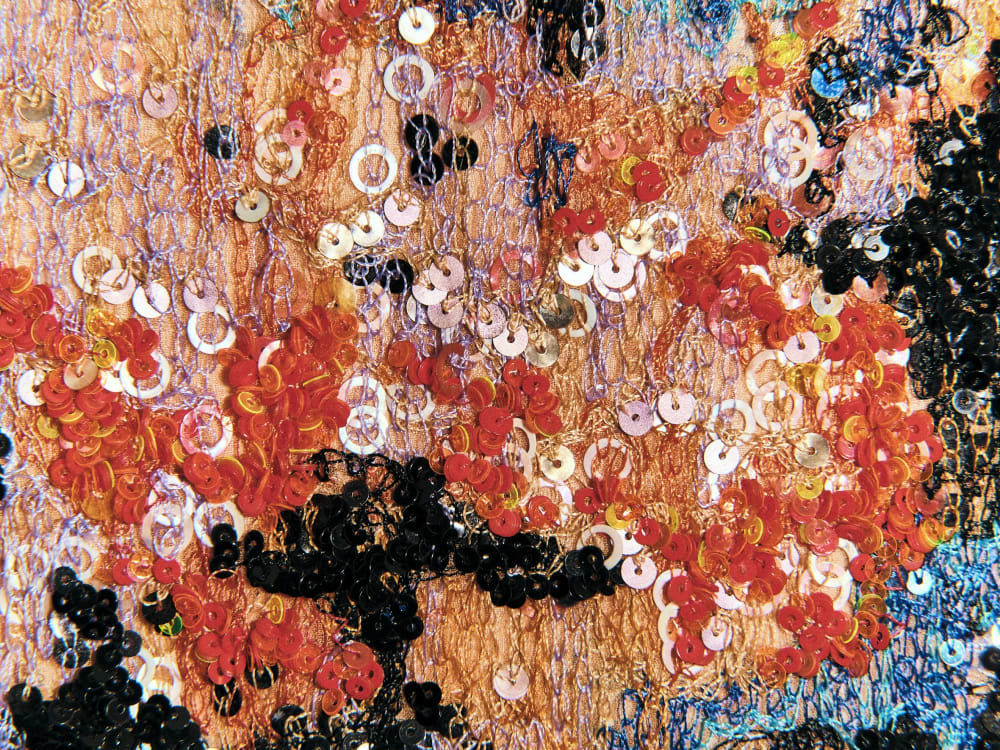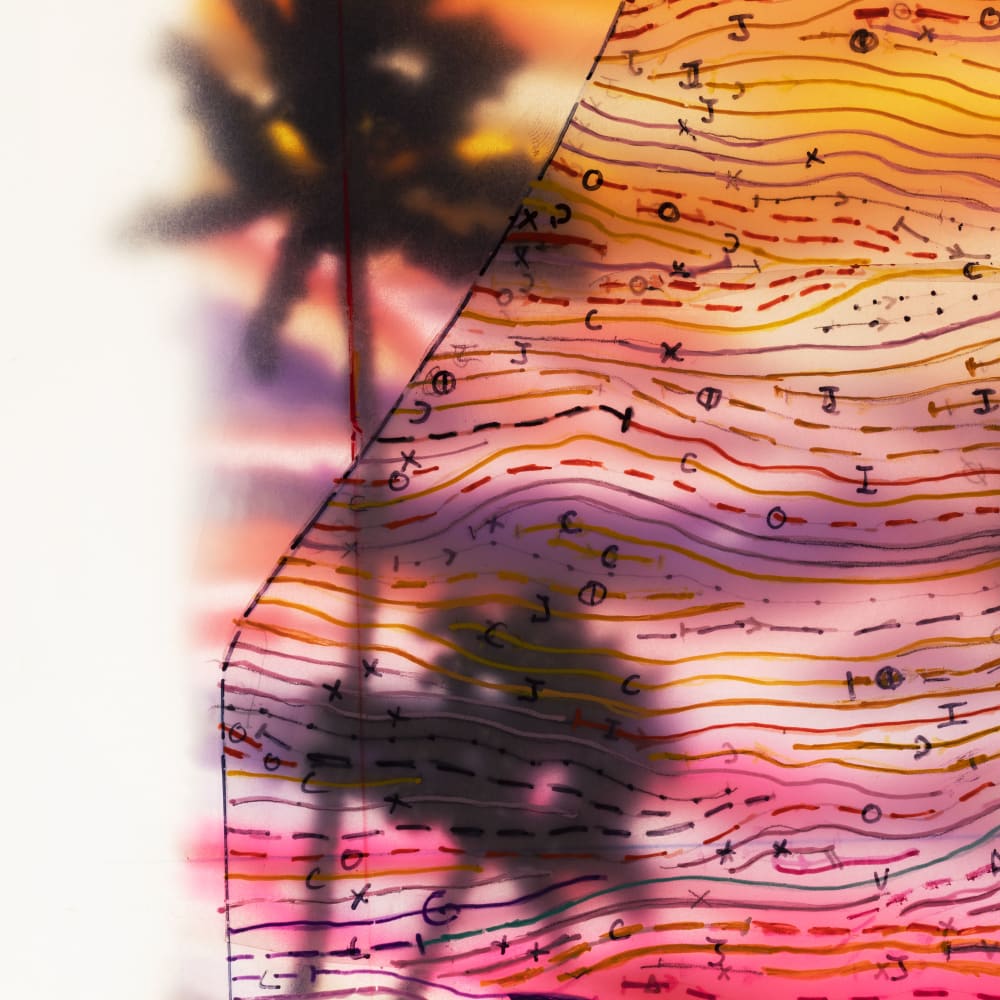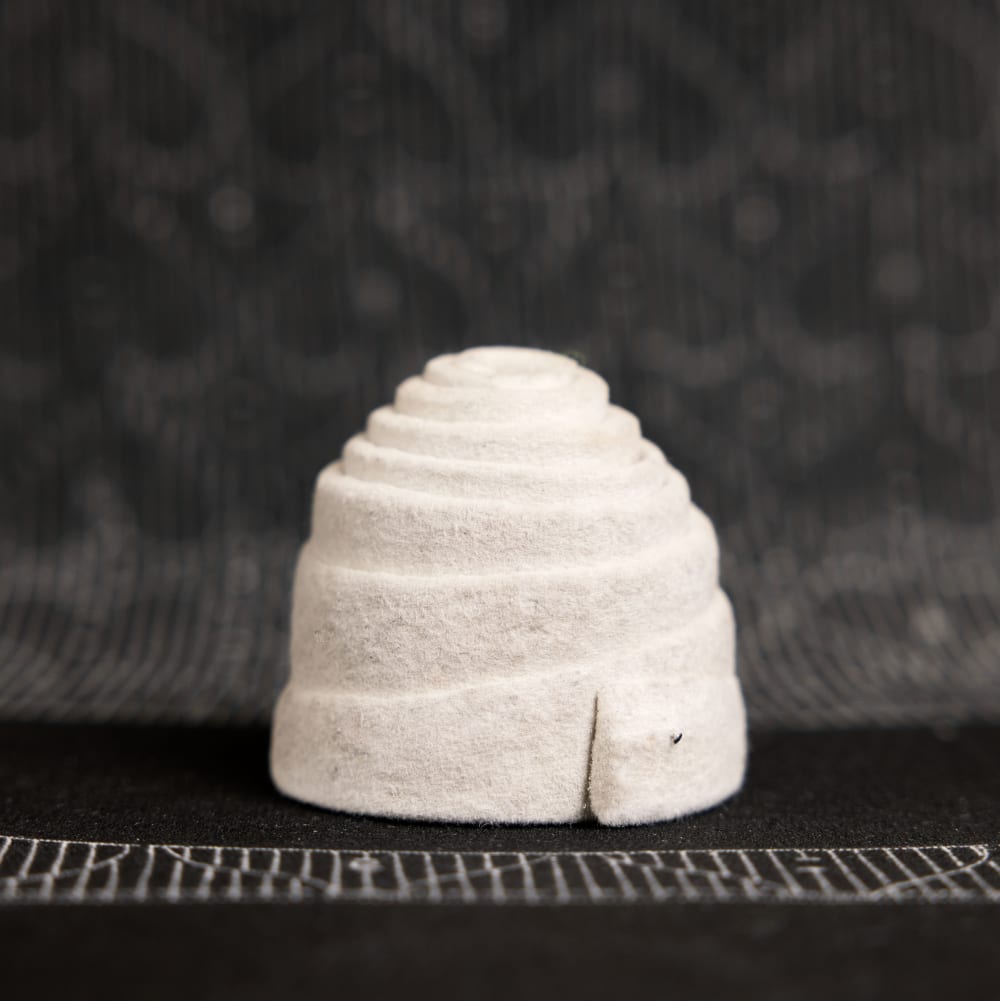
Mains d'avenir —The artisan's path:
Kim, designer and graphic artist at Atelier Montex

Through a series of portraits and stories, the series "Mains d'avenir, the artisan’s path" showcases the career path, passions, and ideas of those who "make" French craftsmanship.
Today, we turn to Kim, designer and graphic artist for Atelier Montex, an embroidery house since 1949.
When she joined the Métiers d'art, Kim was able to count on the support of her family: "My parents trusted me, even though they didn't know the sector. Today, they are very proud of me."
Four years ago, the 31-year-old joined the embroidery house Atelier Montex as a graphic artist in the production department. It's meticulous work that she does with a computer mouse in her hand and 80s music in her ears.
"It's computer-assisted drawing. The idea is to transform the outline of an embroidery into a kind of map, a schematic ," she explains.
Everything is then sent to the embroiderers, who will be able to identify the supplies, stitches, and directions to follow to create their embroidery.
A passion that is acquired
Her journey began in Montreuil, where she graduated with a baccalaureate in applied arts. She continued her studies at the École Duperré with a BTS diploma in fashion design — the Parisian school trains young creatives in the fields of fashion, textile design, ceramics, environmental design, and graphic design. After starting out in jewellery, she returned to her first love: fashion.
"I completed my training with a DMA in Embroidery at the Lycée des Métiers La Source in Nogent-sur-Marne. I worked as a freelancer for three years before joining Atelier Montex four years ago, where I was trained in-house," she explains.
Over the years, she has learned rigour and how to work in a team: "The slightest oversight, the slightest error, can affect hundreds of pieces. It"s an extremely demanding job, so you have to be passionate about it."
Her daily routine involves drawing (sometimes by hand, sometimes with the help of a computer), stitching, sanding, and grading—which requires adapting a pattern to other sizes. Between different embroidery designs, Kim also helps to prepare and cut materials for making patches, charms, and other embroidered items for production.
Living with the world around her
Well aware that certain savoir-faire tends to fall by the wayside, Kim relies on passing on her love of embroidery to spread the word about her profession:
"I have stayed close to my old school, where I regularly return to talk about my work. Passing on skills and techniques is essential. Without Karima, my manager, and Margot, a fellow graphic artist, I wouldn't be where I am today."
Because she works mainly on a computer, Kim is already beginning to adapt to new technologies and innovations in the sector:
"We will always have traditional handmade techniques. But we live in an ever-changing world, where we constantly have to adapt. For example, we have already completed a project using new, more powerful machines that allow us to laser cut or 3D print. I think this can be highly relevant to our context."
Always dreaming
She has made many good memories from the last four years:
"One client asked us to cut out very small shapes. It was painstaking work, a very long drawing process. It was extremely rewarding to see the embroidery on the final piece, to see the design come to life."
An essential link in the chain, Kim regularly allows herself to dream.
"I'd like to work on embroidered masks for shows or music videos, as the masks by French artist Muriel Nisse made me want to work in embroidery," she confides, before slipping her earbuds back into her ears.

“"We have almost endless creative possibilities. My mission is to formalise this creativity so that it can be reproduced in production."”
Kim, designer and graphic artist at Atelier Montex


